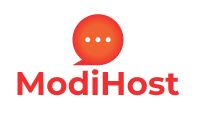Technology has revolutionized the way we live, work, and communicate. From smartphones and tablets to smart home devices and wearable technology, we rely heavily on technology to navigate our daily lives. However, not everyone has the same level of access to and experience with technology.
Accessibility is a crucial aspect of technology that is often overlooked. In a rapidly evolving digital world, it is essential to ensure that all users, including those with disabilities, can access and interact with digital content and services.
The Importance of Accessibility in Tech
Accessibility is about creating equal access and opportunities for everyone, regardless of their abilities or disabilities. In the context of technology, it means designing and developing digital platforms, websites, and applications that can be used by individuals with disabilities.
Accessible technology not only benefits individuals with disabilities but also provides a more user-friendly experience for all users. For example, captions and transcripts in videos not only benefit individuals with hearing impairments but also allow users to consume content in noisy environments or without sound. Similarly, clear and readable fonts benefit individuals with visual impairments as well as those with good eyesight.
Designing Inclusive Digital Experiences
Creating inclusive digital experiences starts with understanding the needs and challenges of different user groups. This includes individuals with visual impairments, hearing impairments, cognitive impairments, motor impairments, and more.
Here are some key principles and techniques for designing inclusive digital experiences:
- Provide alternative text for images and graphics to enable individuals using screen readers to understand the content.
- Ensure proper color contrast for text and background to enhance readability for individuals with visual impairments.
- Use clear and concise language to improve comprehension for individuals with cognitive impairments or those whose first language is not English.
- Implement keyboard accessibility to enable individuals with motor impairments to navigate through the website using only the keyboard.
- Include closed captions and transcripts for videos to make the content accessible to individuals with hearing impairments.
It is essential to involve individuals with disabilities in the design and testing process to gain insights into their unique needs and challenges. By incorporating their feedback, designers and developers can create more inclusive digital experiences.
Tools and Technologies for Accessibility
Advancements in technology have made it easier to create accessible digital experiences. Here are some tools and technologies that can help:
- Screen readers: Software programs that read out the content on the screen for individuals with visual impairments.
- Speech recognition software: Allows individuals with mobility impairments to control the computer using their voice.
- Color contrast checkers: Tools that help designers ensure appropriate color contrast for improved readability.
- Automated accessibility testing tools: Software programs that scan websites and applications for accessibility issues and provide recommendations for improvement.
By leveraging these tools and technologies, designers and developers can ensure that their digital products are accessible to all users.
Conclusion
Technology has the power to create a more inclusive and equitable society by providing equal access to digital experiences. Designing and developing technology with accessibility in mind is not just a legal or moral obligation, but it also makes business sense. Inclusive digital experiences benefit everyone and contribute to a more diverse and inclusive online community.
As technology continues to advance, it is crucial to prioritize accessibility and ensure that technology is designed to cater to the needs of all users. By creating inclusive digital experiences, we can bridge the digital divide and empower individuals with disabilities to fully participate in the digital world.
